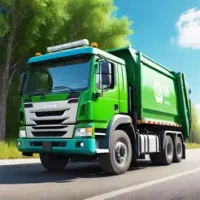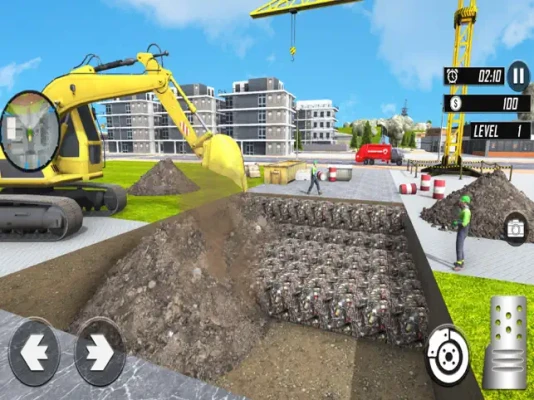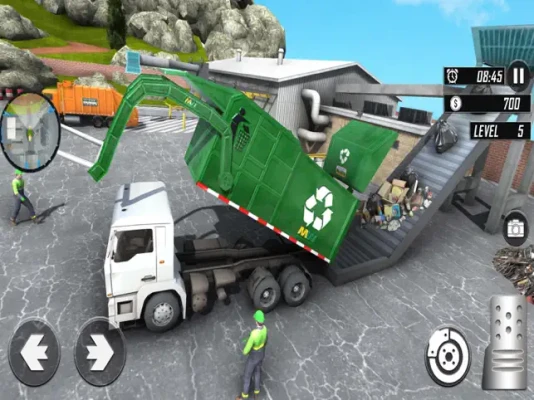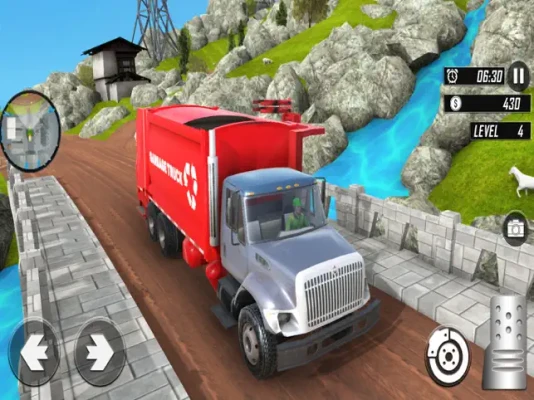
Latest Version
1.0
December 25, 2024
Dumper Garbage Truck Simulator
Games
iOS
267.4 MB
0
Free
Report a Problem
More About Off Road Dump Truck Games 2024
Transforming Urban Landscapes: A Comprehensive Guide to Effective Waste Removal Services
The mayor of our vibrant city has received numerous complaints about the inefficiencies of the waste removal service. In response, a crucial project has been initiated to revitalize our urban areas and restore the natural beauty of our hillside environments. This article outlines the essential steps to lead a waste removal services company in effectively cleaning up the cluttered streets and scenic mountain highways.
Understanding the Importance of Waste Management
Effective waste management is vital for maintaining the health and aesthetics of our communities. Poor waste removal not only leads to unsightly environments but also poses significant health risks. By prioritizing efficient waste collection and recycling, we can enhance the quality of life for residents and protect our natural surroundings.
Strategic Planning for Waste Removal Operations
To tackle the issue of waste accumulation, it is essential to develop a strategic plan that addresses both urban and hillside areas. This plan should include:
- Assessment of Waste Accumulation: Conduct a thorough evaluation of the areas most affected by trash buildup. Identify hotspots in urban zones and along mountain highways.
- Resource Allocation: Determine the number of trash trucks and personnel required for efficient operations. Ensure that resources are allocated based on the severity of waste accumulation.
- Scheduling Regular Cleanups: Establish a routine schedule for waste collection to prevent future buildup. Consistency is key to maintaining cleanliness.
Leading the Waste Removal Team
As the leader of the waste removal services company, your role is crucial in ensuring the success of the cleanup project. Here are some key responsibilities:
- Training and Safety Protocols: Ensure that all team members are trained in safe waste handling practices. Emphasize the importance of safety, especially when navigating challenging terrains.
- Effective Communication: Maintain open lines of communication with your team. Regular briefings can help address any concerns and improve overall efficiency.
- Monitoring Progress: Keep track of the cleanup progress and make adjustments as necessary. Use data to inform decisions and optimize operations.
Driving Skills for Heavy Garbage Trucks
Driving a large garbage truck, especially on downhill tracks, requires exceptional skills and awareness. Here are some tips for handling these vehicles safely:
- Familiarize Yourself with the Vehicle: Understand the specific features and limitations of the garbage truck you are operating. This knowledge is crucial for safe driving.
- Maintain a Safe Speed: When driving downhill, it is essential to control your speed. Use engine braking to help maintain a safe pace and prevent accidents.
- Be Aware of Surroundings: Watch for potential hazards such as landslides or wildlife crossing the road. Staying alert can prevent dangerous situations.
Implementing Recycling Initiatives
In addition to waste removal, implementing recycling initiatives is vital for sustainable waste management. Here’s how to integrate recycling into your operations:
- Educate the Community: Inform residents about the importance of recycling and how to properly sort their waste. Community engagement is key to successful recycling efforts.
- Set Up Recycling Bins: Place clearly labeled recycling bins in strategic locations throughout the city and along highways. Accessibility encourages proper waste disposal.
- Partner with Local Recycling Facilities: Establish relationships with recycling centers to ensure that collected recyclables are processed efficiently.
Measuring Success and Community Impact
To gauge the effectiveness of the waste removal project, it is essential to measure success through various metrics:
- Volume of Waste Collected: Track the amount of waste removed from both urban and hillside areas. This data can help assess the impact of your efforts.
- Community Feedback: Solicit feedback from residents regarding the cleanliness of their neighborhoods. Positive responses indicate successful operations.
- Environmental Impact: Monitor the ecological benefits of reduced waste in natural areas. A cleaner environment contributes to biodiversity and overall community health.
Conclusion: A Cleaner Future Awaits
By leading a dedicated waste removal services company, you can significantly improve the cleanliness of urban areas and hillside environments. Through strategic planning, effective team leadership, and a commitment to recycling, we can create a cleaner, healthier future for our communities. The mayor’s initiative is not just about removing trash; it’s about fostering a culture of responsibility and sustainability that benefits everyone.
Rate the App
User Reviews
Popular Apps










Editor's Choice






























